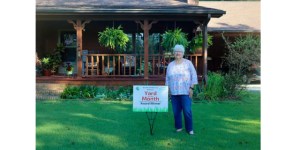Growings On: Check requirements before planting
Published 8:00 am Wednesday, October 25, 2023

- Brenda Jackson
I’ve said often, put the right plant in the right place. It’s very frustrating to pay money for plants at the nursery and then have them wither and die after you plant them. The key to getting all your plants, whether they be trees, shrubs or flowers, to thrive is to plant them where they are best suited.
When selecting a site, it is important to consider the space required by the mature plant. For example, an oak tree in a flowerpot isn’t expected to survive for long without intensive management — think about all the pruning and work required by a Bonsai. You can research which varieties are appropriate for our planting zone by going to http://www.plantmaps.com/interactive-georgia-usda-plant-zone-hardiness-map.php, an interactive U.S. Department of Agriculture gardening and plant hardiness map. Just type in your ZIP code and you are ready to go.
Trending
You should consider the amount of light as well as soil quality, type and texture needed by your plants. Deep tilling of the entire planting area will increase aeration, reduce soil compaction and better enable the roots to colonize beyond the root ball.
The planting hole should be in the middle of your planting area and at the same depth of the pot it came out of. The sides of the hole should be slanted to encourage the roots to continue outward into the rest of the planting area. The hole itself should be at least 2-3 times the size of the root ball to allow for maximum root growth beyond the root ball. In other words, plant a $5 plant in a $10 hole.
Remove all wrapping material from around the root ball, if there is any, all plastic, bindings, ties, wire baskets and burlap. Gently pull the outer roots away from the root ball and break up the nursery soil around the roots.
Place your plant vertically in the hole and backfill with native soil dug from the site. Try to keep the roots in their natural orientation and spread them horizontally. Do not bend, twist or in any way force the roots in a particular direction as this can cause them to girdle the base of the plant and cause it to suffocate over time. Snugly pack the soil in around the roots, eliminating large air pockets, but do not tamp the soil so tight it becomes compacted.
After planting, water the entire planting area (not just the hole itself) in order to settle the soil and reduce air pockets. Watering also helps establish root contact with the soil/water systems of the planting site. It is even more important when there is little residual soil moisture available.
Last but certainly not least, mulch an area at least twice the size of the planting hole and enlarge it as your plants grow. Mulch will conserve water, reduce competition from surrounding plants and moderate soil temperatures in both summer and winter. Pull the mulch away from the stem or trunk base to avoid trapping moisture, which can cause rot.
Trending
If you have any questions, feel free to contact Brenda Jackson, the agricultural and natural resources agent for Murray County Extension, at (706) 695-3031 or bljack@uga.edu.





